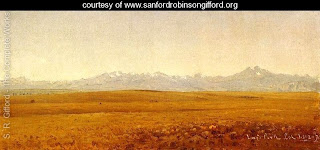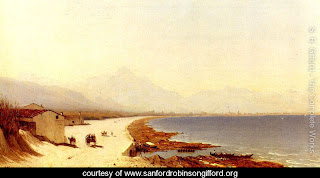Today I'm sharing a link to an entry from "The Drawing Blog" of Artist Daily (which I very much enjoyed reading this morning).
http://www.artistdaily.com/blogs/drawing/archive/2013/03/13/the-vocabulary-of-line-part-1.aspx
Excerpted from that post:
The Emotional Bridge Between You and Your Viewer 03-13-2013 by Juliette Aristides
"
A line is a path that can offer an interesting and varied journey, rhythmic and with occasional, pleasurable surprises. Thus is one tempted to take the journey again."
-Krome Barratt,
Logic and Design: In Art, Science, and Mathematics
Creating representational art is challenging; a satisfying visual event requires more from the artist than simply transcribing nature directly. With the many technical hurdles to be surmounted in order to get an image to look "right," artists often tend to focus keenly on accuracy alone. However, our job is not simply to copy what we see but to form an emotional bridge from the work to the viewer. An effective work of art is dependent upon many elements working together to create harmony between the content, mood, and composition.
It is important that we artists use the vocabulary of our craft in order to distill our message and communicate with the viewer on an emotional level. By utilizing one of the most fundamental elements, line, we are able to construct pictorial scaffolding on which to support mood and feeling. The vocabulary of horizontal, vertical, and diagonal lines is so stable and ubiquitous that it is linked to sight itself; and by utilizing these few simple line directions, we can create a design that heightens the emotion in a work of art.
The horizontal line is a bedrock element in both life and art. We are deeply dependent upon this steady foundation in order to walk without falling or to build structures upward. Our eyes sit horizontally across our face; we more easily see side to side than up and down; the solidity of the floor beneath our feet balances us when we stand.
This line is the least moveable and most stable part of a composition, be it in the form of a horizon line or the top of a table: it is calm and secure, passive and foundational, peaceful and predictable. Creating a counterpoint to excessive movement, the horizontal affords us a base note of security from which we may venture forth.
A long, uninterrupted horizontal can fall prey to banality.
In Sanford Gifford's oil painting, Long's Peak, Colorado, we have so much predictable regularity that the image becomes strangely blank and hypnotic.
In The Road by the Sea - Palermo, Italy, Gifford added the verticals of a house, small figures, a curving pathway, and the diagonal line of the water. The horizon line is omnipresent and provides rest to the eye, yet there is enough dynamism to add interest and tension to the overall composition.
http://traumwerk.stanford.edu/philolog/2006/10/titians_bacchus_and_ariadne_15.html
Bacchus and Ariadne by Titian, 1520, oil on canvas.
Titian's Bacchus and Ariadne depicts a frenzy of activity, but this motion rests upon the stable, strong ground of the horizon line; and without the few ticks of horizontal line, the work's sense of depth would be lost.
By using the simple horizontal, we can add solidity and a sense of peace to an otherwise unstable or agitated composition. In appealing to our physical environment and psychological understanding of the world around us, line-oriented design elements allow us to build a bridge between our own world and that of the viewer. One is able to impart mood to a work of art without relying on accuracy alone.
In my next installation, we will explore the confidence and strength found in the vertical line and the oft-tumultuous energy of the diagonal line.
--Juliette



No comments:
Post a Comment